#pixar andre and wally b
Explore tagged Tumblr posts
Text


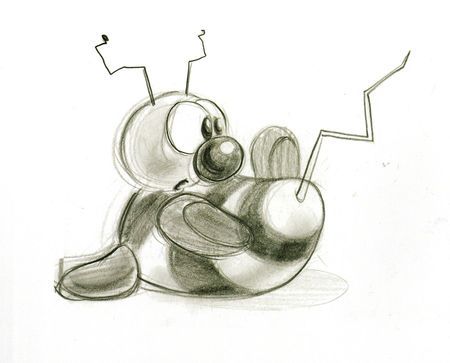
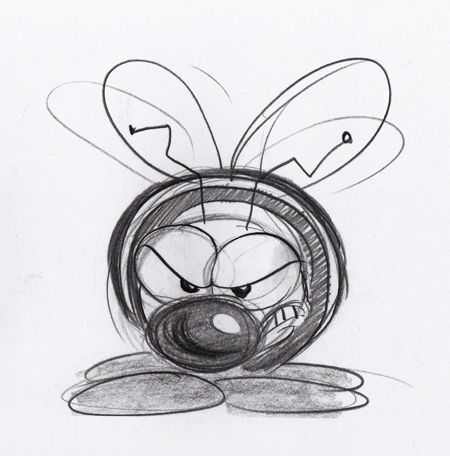
#The Adventures of Andre & Wally B#john lasseter#the adventures of andre and wally b#pixar#pixaredit#pixar edit#pixar short#pixar shorts#character designs#concept art#pixar short film#capturingdisney#*
29 notes
·
View notes
Text
André finds an AI-generated mindscrew
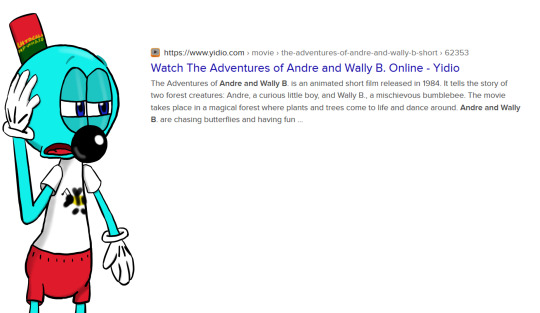
In this edited screenshot, André has just found this link that provides mostly inaccurate information about the short film he has debuted. The link claims that André and Wally B. look at each other through rose-coloured glasses (i.e. they have a bed of roses) and the setting is as similar as the one used for the Silly Symphonies short film Flowers and Trees. That's a pack of lies! In fact, André was shown to be hostile towards Wally B. and there are no sentient or anthropomorphic flora in it, not even the forest has magical properties.
It seems that there is lazy use of artificial intelligence, leading to the presence of hallucinations such as this one. And, yes, this is AI slop. AI slop is considered a form of quantity over quality prioritization.
Anyways, the moral is: please do not overrely on generative artificial intelligence or else your creativity will be decreased significantly.
André > The Adventures of André & Wally B. © Pixar (formerly known as Lucasfilm Computer Graphics) and Lucasfilm (both of them currently owned by The Walt Disney Company)
#andré and wally b#fan art#fanart#digital art#the adventures of andré and wally b#andré & wally b#the adventures of andré & wally b#the adventures of andre and wally b#the adventures of andre & wally b#ai hallucinations#ai slop#large language model#cognitive dissonance#lazy use of artificial intelligence#andre and wally b#i was somewhat bored and i did this#pixar fanart
1 note
·
View note
Text

Andre and Wally B🐝
#pixar#pixar animations#disney pixar#pixie edit#pixar animation studios#disney#andre and wally b#andre#wally b#pixar andre and wally b#pixar andre#pixar wally b
2 notes
·
View notes
Text
Did I Say You Can Have It?

It was a beautiful sunny day, and André got himself some honey for a small picnic as he brought a table. When he left (to do his business), Wally B.'s nose got attracted to the scent of the hunny distance close as he walked by. Wally B. licked his lips after discovering honey and started eating from the pot. When André was back, his eyes were wide when his rival was eating his food. Wally B. jumped in a fright, seeing André with his wrists against his hips, looking with a scowl and a quirk. Wally B. backed away, luckily didn't eat the whole pot.
"Did I say you can have my honey?" André questioned the bee.
Wally B. nervously chuckled, didn't know it was André's honey and didn't know why he left it there.
"Heh heh... sorry." The bee winced in a nervous tone. Though, André, wouldn't accept his apology, still irritated and annoyed.
"Mhm, didn't think so." The android said.
After a few chuckles from the bee, Wally left in a dash, leaving André to sigh in annoyance, now has to eat half of his honey.
~~~~~~~~~~~~~~~~~~~~~~~~~~~~~~~~~~~~
This is not the best idea, but I couldn't help but to create this ^^;
This is the idea I had after watching André and Wally B. Some people may not like the short, but don't judge me ^^; I liked it and did this fanart, so PLEASE don't be rude about it ;_;
I had this idea if Wally B. had come back to eat André's honey without permission, and it annoys him after the bee's comeback XD
I know it's not creative, but I can't help it ;_; tell me what y'all think? These two are pretty easy to draw ^w^
André, Wally B. and The Adventures of André and Wally B. ��Alvy Ray Smith, Disney, Pixar Animation Studios and Lucasfilm Ltd.
Artwork ©SuperShadowSilver
No copyright infringement is intended
Used: regular costumized designed pencil, Crayola colored crayons, colored pencils and scented colored pencils and Cra-Z-Art colored pencils
#disney#disney fanart#disney pixar#pixar#pixar fanart#the adventures of andre and wally b#andre#wally b#andre and wally b#lucasfilm#lucasfilm fanart#fanart#honey#traditional art#alvy ray smith
5 notes
·
View notes
Text
The Adventures of Andrè and Wally B.
Wow, it all started here, way back in 1984. Although it is amazing to see how much the animation has improved in 37(!!!) years, the computer animation style in this short was revolutionary for the time and likely helped popularize this medium, leading to the Pixar classics we know and love today.
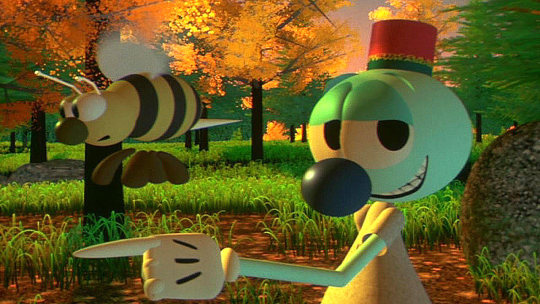
I thought the concept for this short was cute, and it was entertaining to watch. The medley accompanying the short, containing “Flight of the Bumblebee”, kept the mood playful and fun rather than frightening. “The Adventures of Andrè and Wally B.” is short enough to keep its audiences engaged without going into an in-depth storyline or character study. Even though it doesn’t look like much, this Pixar short is worth watching for historic value and to see the catalyst of 3D animation.
1 note
·
View note
Text
On This Day In History
On December 18, 1984, The Adventures of André and Wally B was released to the public. This would be the first CGI-animated film in history. Although it wouldn’t bring any form of popular success, this film would lay the foundation from which Toy Story and Pixar animations would be built.
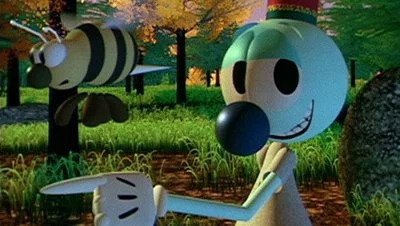



Congratulations, André and Wally B! You won’t be forgotten!
#on this day in history#the adventures of andre and wally b#pixar#cgi#cgi animation#oof this animation hasnt aged well#But we still love you anyway! 💕
50 notes
·
View notes
Photo
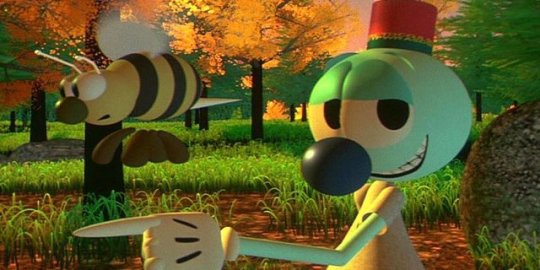
am i the only one who always thought this guy looked like flippy
#apparently his name is andre#hes from the pixar short 'the adventures of andre & wally b'#honestly one of my favorite shorts
4 notes
·
View notes
Video
youtube
Computer Graphics Special (1986 High Quality 60FPS Laserdisc CG Demo Reel)
This is the 1986 Laserdisc "Computer Graphics Special" (SS098-6022) which is a very early CG demonstration disc with behind-the-scenes video & some very interesting (and dated) narration. The video features CG clips created by Pixar, Robert Abel & Associates, Wavefront, ect & used by NBC, CBS, Nickelodeon, HBO, Bravo, & many other companies in the 1980's.
This disc was also released in the USA with minor differences as "Dream Machine #1: The Visual Computer" (V1001L).
xxxxxxxxxxxxxxxxxxxxxxxxxxxxxxxxxxxxxxxxxxxx
Chapter List (by scene): 00:14- PACIFIC DATA IMAGES "CHROMOSAURUS" 01:55- MASSACHUSETTS INSTITUTE OF TECHNOLOGY "MIT SKETCHPAD" 02:06- UNIVERSITY OF UTAH "ANIMATED HAND" & "TALKING HEAD" 02:31- EVANS & SUTHERLAND "CT6 GRAPHICS" 02:38- SOGITEC "CAMERA" 02:45- DIGITAL EFFECTS "WATER DROPLET" 03:11- CRANSTON/CSURI PRODUCTIONS INC. "KALEIDOSCOPE" 03:37- OMNIBUS COMPUTER GRAPHICS "TEXTURED CYLINDERS" 03:52- APOLLO COMPUTER "QUEST-A LONG RAY'S JOURNEY INTO LIGHT" 09:24- SOGITEC "ROBOT" 09:58- KLEIN &/CD TAYLOR "Z CHANNEL" 11:29- ABEL IMAGE RESEARCH "AMAZING STORIES OPENNING"(PROCESS) 13:26- INTELLIGENT LIGHT "KANSAS CITY ROYALS" 14:23- VMAX "CHANGING SPHERE" 14:31- SANDIA NATIONAL LABORATORIES "SPHERE PYRAMID" 14:41- EIHACHIRO NAKAMAE "FEAST OF LIGHT" 14:56- WAVEFRONT TECHNOLOGIES "LIGHTNING SPHERES" 17:58- VMAX "WHERE THE WILD THINGS ARE" 19:20- VMAX "FLYING BIRD" 19:45- MELVIN PRUEITT "CRYSTAL DOVE" 20:28- EVANS & SUTHERLAND "WIREFRAME WALKING PERSON" 20:06- PIERRE LACHAPPELLE "TONY DE PELTRIE" 22:51- ABEL IMAGE RESEARCH "BRILLIANCE" (PROCESS) 25:19- FEIGENBAUM PRODUCTIONS "PHILIPS LIGHTBULB" 25:27- SOGITEC "QUATRO" 25:48- CRANSTON/CSURI PRODUCTIONS INC. "TRW COMMERCIAL PROCESS" 28:02- W.A.C.S. PRODUCTIONS "EXPLORACOM" 28:23- ADVANCED ENTERTAINMENT ASSOCIATION "PILL GRAPH" 28:31- STRACTURAL DYNAMICS RESEARCH CORP. "HAIRDRYERS" 28:52- INTELLIGENT LIGHT "KITCHEN AID" 30:03- ANIMATICA "BRIDGE" 30:13- AUTODESK INC. "TRANS-AMERICA BUILDING" 31:18- ENGLISH MARKELL POCKETT LTD "GLOBE" 31:42- PIXAR "GEOGRAPHICAL MAPPING" 31:52- PRISM ARTS GROUP "EYE" & "NERVES" 32:31- PACIFIC PRESBYTERIAN MEDICAL CENTER "CEEMAX" 33:17- UNIVERSITY OF NORTH CAROLINA "GRIP" 33:25- NELSON MAX "DNA" & "TOMATO BUSHY VIRUS" 34:11- VMAX "WATER" 34:28- DIGITAL PRODUCTIONS "GRAND CANYON" 34:37- EVANS & SUTHERLAND "AIRCRAFT CARRIER FLIGHT SIMULATION" 35:42- EVANS & SUTHERLAND "SPACE SHUTTLE LANDING SIMULATION" 37:17- DIGITAL EFFECTS "GALAXY" 38:03- APOLLO COMPUTER "SPACE RUNWAY" & "QUEST-A LONG RAY'S JOURNEY INTO LIGHT" 39:58- DIGITAL PRODUCTIONS "COLORED MARBIES & CHROME" & "TRW COMMERCIAL" 40:41- ABEL IMAGE RESEARCH "PROCESS OF RENDERING STONE" 41:23- CRANSTON/CSURI PRODUCTIONS INC. "SPINNIG TEXTURED URN" 41:53- DIGITAL PRODUCTIONS "COKE CANS" 42:59- CRANSTON/CSURI PRODUCTIONS INC. "MOBIUS GEARS" 43:41- DONNA COHEN "PASTEL" & "SPACED" & "PILLARS" 43:54- J. MICHAEL O'ROURKE "LUMINESCENT MODULATIONS" 44:46- YOICHIRO KAWAGUCHI "GROWTH III-ORIGIN" 46:08- EVANS & SUTHERLAND "REALTIME TANK" 47:39- ELECTRON VIDEO CREATIONS PORTION OF "THE LONE BREAKER" 49:22- VMAX "JUGGLING CLOWN" 49:51- GREENLIGHT PRODUCTIONS LTD. "IZZY" 50:24- PIXAR "THE ADVENTURES OF ANDRE AND WALLY B" 52:10- PIXAR "YOUNG SHERLOCK HOLMES" © PARAMOUNT PICTURES 53:30- THE MOVING PICTURE COMPANY "PICTURE GALLERY" 54:51- PACIFIC DATA IMAGES "A COMIC ZOOM"
xxxxxxxxxxxxxxxxxxxxxxxxxxxxxxxxxxxxxxxxxxxx
There is an accompanying Japanese narration track which I'd like to add if/when YouTube rolls out multiple audio tracks to all YouTubers.
A small portion was removed featuring NBC's Amazing Stories intro due to copyright.
This was played back using a Pioneer HLD-X0 laserdisc player.
xxxxxxxxxxxxxxxxxxxxxxxxxxxxxxxxxxxxxxxxxxxx
If you want to follow me for updates or want to help me purchase that $8 million flight simulator computer, please click the link below: https://linktr.ee/OpWorkshop
#computer graphics#video#cgi#demo#1980s#computer animation#glowing lines#flying logos#obscure media#Reely Interesting#obsolete media#dead media#laserdisc#videodisc
4 notes
·
View notes
Photo



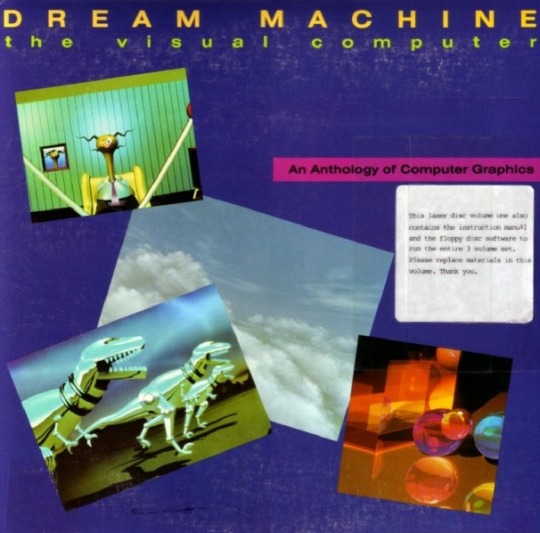

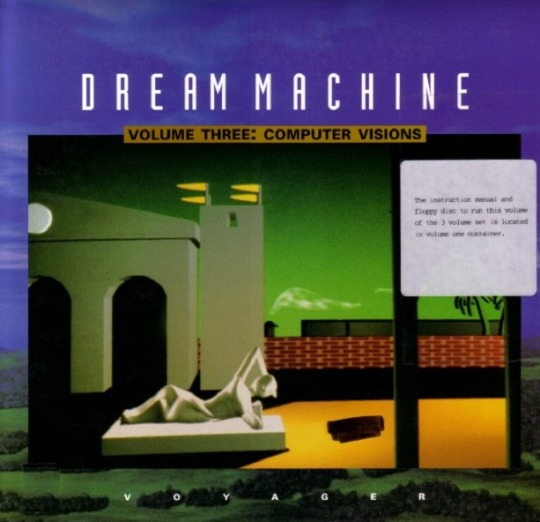




#LaserDisc#Computer Animation#80s Computer Animation#80s CGI#Chromosaurus#Dream Machine#Computer Magic#Computer Animation Festival#State of the Art of Computer Animation#Alvy Ray Smith#John Lasseter#The Adventures of Andre and Wally B#The Adventures of André and Wally B.#The Adventures of André and Wally B#The Adventures of Andre and Wally B.#The Graphics Group#Pixar
50 notes
·
View notes
Text
The History of Animation
Animation dates back all the way to 3000 B.C.in which they engraved pictures onto pottery which gave the indication of animals leaping. along with this in 1500 A.D. Leonardo da Vinci Virtruvian Man was drawn at different angles which alos shows the idea of movement.

As time moved on and the industrial revolution began and so experimentation with machines started to roll out.The first of which was the Magic Lantern in 1603.This contraption consisted of an image projector which projected images from small sheets of glass. this was considered early animation because some of the sheets had moving parts.
In 1824, came the thaumatrope. the Thaumatrope was a simple rotating disk which had strings attached to each side. it was said to work on the idea persistence of vision. The disk would spin and the pictures would seem to fuse together.

A few years later, in 1831 the next stage of animation was the Phenakitoscope. This was a small spinning disks which reflected the images onto a mirror and this made the illusion of movement. 3 years later in 1834, this developed into the Zoetrope. it was simply a more developed idea. it was a hollow drum shape that could fit strips of paper that would spin and it made it look as if the images were moving.

the crazy thing is that it wasn’t until 1868 that the flip-book was actually created. it is a simple creation that only consists of paper and small drawings that change slightly to give the look of a small animation. It is said that the flip book was more inspiring than the actual machines created for the early animators.
Then in 1877, came the praxinoscope. this built on the zoetrope as instead of a simple wheel it used multiple to rotate images and it is said that this is where the first initial animated cartoon images.
Once the 20th century hit, cartoons were becoming more prominent. One of the many studios to open and thrive during this period was Bray studios in New York. Bray gave opportunity to many animators to help kick start there careers some of who created famous cartoons such as Mighty mouse, Betty Boop and Woody Woodpecker.
In 1906, the first ever full animated film was created using stop-motion animation. It was called Humorous phases of funny faces. the film was produced by James Stuart Blackton. the film was a cartoonist drawing faces on a chalkboard and he faces were coming to life. Then in 1908 Fantasmagorie was created. this was the first animated film using hand-drawn animation. it was produced by Emile Cohl who was a french producer. it was also a silent film like the film created in 1906.
Jumping forward a couple of years Felix the Cat was introduced in 1914. Felix was considered the first animated movie star. Felix was first depicted in Feline Follies. He was created by Pat sullivan and Otto Messmer.

After Felix in 1928, cam Walt Disney first actual credible piece of animation- Steamboat Willie. this animation was the first of its kind because it had sound printed onto the film. you may actually recognise this animation as it is sometimes shown as an opening credit at the beginning of some Disney films.

Walt Disney was a world renowned animator and was the creator of so many famous faces such as Mickey mouse, snow white and many more. Walt was actually the original voice for mickey mouse and during his lifetime won 7 Emmy awards and 22 Academy Awards for his work. he was also very initiative as he turned his animations into theme parks all around the world.
Soon after came The Golden Age of American Animation. these were the years that homed the rise of the famous Walt Disney, Warner Bros and many others.
In 1930 Disney started to air the Mickey mouse series which proved to be a massive hit compared to his original animated series, Silly Symphony. Mickey mouse had more memorable and likeable characters hat everyone enjoyed.
The Golden age was a very important time for animation as it was when the want for animation was lowering in popularity however, it began to turn itself around. In 1937 Snow White was released by Disney. this was the first full-length feature to include fully drawn animated images throughout. this kicked off Disney as the famous animation movie maker he was. After Snow White he went on to create Pinocchio which was considered an incredible achievement by many and cost twice the amount that Snow white had.
But as war broke out the studios had to move away fro there fun animations and instead were commissioned to start creating war propaganda to help with the war effort. the only film he was able to carry on with at the time was Bambi which released in 1942. However it bombed in the box office and had various reviews. It was later re-released where it did much better.
once the war ended, there wasn’t much money for studios to start back up previous pipeline projects. But soon after came the American animation TV age.
During this time many still popular shows were created. the industry began to shift from only animated films and started to created Cartoon shows and this was the start of many favourite channels such as Nickelodeon and The Disney channel.
the first show to be released was The Flintstones this was a popular cartoon show based around a family living in the stone age. It was fun for everyone and many people still like it to this day. It was released in 1960. A year later yogi bear was created and debuted on national TV. it was a spin off form a previous animated creation called Huckleberry Hound. the creator of this masterpiece was Hannah Barbara.

1964 was also a big year. during this year. Pink Panther won the best animated film and also the first ever adult cartoon was released. this was the first animated series to be aimed towards the entertainment of adults . the show was called Fritz the cat.
In 1980, the modern age of animation began. this was when CGI really kicked off. 3D modelling took over the original stop-motion done through drawing. and so computer aided animation began to kick off throughout the world.
The first full animated CGI film was released in 1984 it was called The adventures of Andre & Wally B. the creators of this short film were The Graphics Group. This company was what Pixar was originally know as. And in 1987 the Simpsons hit the worlds TVs. the Simpsons was created by Matt Groening for the Fox channel. The Simpsons is the longest running american sitcom. since its first showing it has had 30 seasons and people still love to this day. It sits currently with a 8.7 rating on IMDB. it also had a film release in 2007.
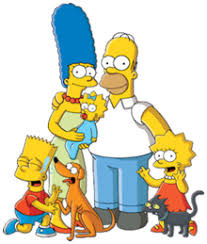
In 1995, the first fully computer animated film was released, Toy story this was Pixars first full-length feature film that was computerised animation. the films executive producer was Steve Jobs. the movie made worldwide amount of $362 million.
Once the 2000s hit animation began to fly even further with models becoming more realistic than ever. Studios began to release cartoon movies multiple times each year and pipeline projects that had been in the works for years began to be seen on the big screens.
As you can see animation has come a very long way. And it will continue to grow and flourish from what we know at the moment.
14 notes
·
View notes
Photo
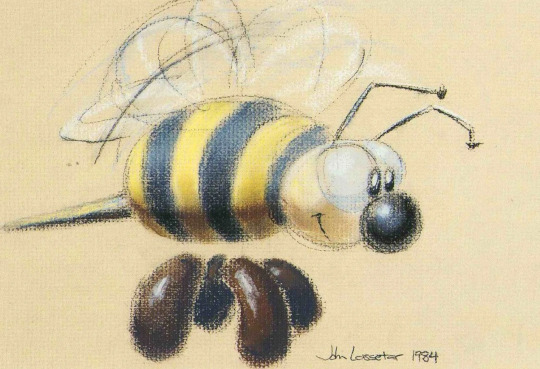


Artwork by John Lasseter.
#The Adventures of Andre & Wally B#concept art#john lasseter#pixar#pixaredit#pixar edit#pixar short film#pixar short#Pixar shorts#pixar animation studios#disney#disneyedit#disney edit#capturingdisney#*
56 notes
·
View notes
Text
Stop Motion Animation-History
The magic lantern was made in 1603, it is an image projector using pictures on the sheets of glass, some sheets contain moving parts. It is considered the first example of project animation.
In 1824, the Thaumatrope housed a rotating mechanism with different picture on each side. When rotated, you saw a combined picture. The Thaumatrope is a Victorian toy constructed from a simple disk or card featuring a different picture on each side and attached to two pieces of string. When the strings are twirled rapidly the card rotates on its axis and the two images appear to combine. Invented by John Ayrton Paris (1785-1856), an English physician, in 1825, the Thaumatrope was the first instrument to exploit the persistence of images on the retina. Paris’s Philosophy in sport made science in earnest, first published in 1827, expounded his belief that scientific learning in children could be stimulated through a combination of amusement and instruction, using demonstrational toys such as the Thaumatrope.
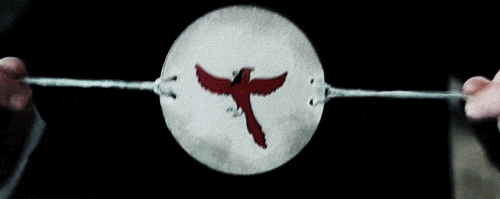
In 1831, the phenakitoscope feature spinning disks reflected in mirrors that made it seem like the pictures were moving.
The optical toy, the phenakistoscope, was an early animation device that used the persistence of vision principle to create an illusion of motion. It was invented by Joseph Plateau in 1841.The phenakistoscope used a spinning disc attached vertically to a handle. Arrayed around the disc's center were a series of drawings showing phases of the animation, and cut through it were a series of equally spaced radial slits. The user would spin the disc and look through the moving slits at the disc's reflection in a mirror. The scanning of the slits across the reflected images kept them from simply blurring together, so that the user would see a rapid succession of images that appeared to be a single moving picture. A variant of it had two discs, one with slits and one with pictures; this was slightly more unwieldy but needed no mirror. Unlike the zoetrope and its successors, the phenakistoscope could only practically be used by one person at a time.
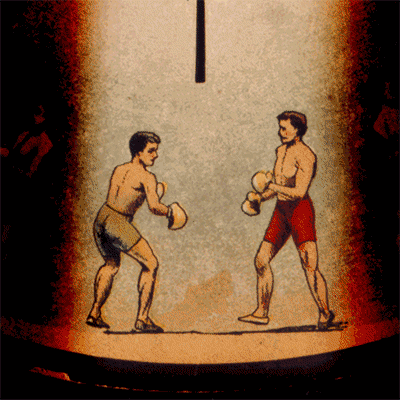
In 1834, the zoetrope was a hollow drum that housed images on long interchangeable strips that spin and made the images appear to move.
The zoetrope , invented in 1834 by William George Horner, was an early form of motion picture projector that consisted of a drum containing a set of still images, that was turned in a circular fashion in order to create the illusion of motion. Horner originally called it the Daedatelum, but Pierre Desvignes, a French inventor, renamed his version of it the zoetrope (from Greek word root zoo for animal life and trope for "things that turn.")
A zoetrope is relatively easy to build. It can be turned at a variable rate to create slow-motion or speeded-up effects. Like other motion simulation devices, the zoetrope depends on the fact that the human retina retains an image for about a tenth-of-a-second so that if a new image appears in that time, the sequence was seem to be uninterrupted and continuous. It also depends on what is referred to as the Phi phenomenon, which observes that we try to make sense out of any sequence of impressions, continuously relating them to each other.

In 1868 the flip-book, also known as the kineograph, reached a wise audience and it credited with inspiring early animators more than the machines developed in this era.
A flip book is a collection of combined pictures intended to be flipped over to give the illusion of movement and create an animated sequence from a simple small book without machine.
Very popular at the end of 19 th century and the beginning of 20 th century, but still produced today, flip book is the American name even used in France, more often than its French name folioscope. British people call it flick book or flicker book; in Germany Abblätterbuch (books to be flipped through) in the 19 th century and then Daumenkino : “thumb cinema”, name that we also find sometimes in the US at the beginning of 20 th century (also called thumb book) as well as less usual names such as flip movie, fingertip movie, riffle book, living picture book or hand cinema.
Some authors compared the flip book to the Magic Book or Blow Book, a fashionable kind of books in 19 th century that allowed animations or optical illusions. Actually, the only common point is that they both use the principle of animation. The actor and historian of magic, Ricky Jay, is the author of a great work devoted to these small books

In 1877, the praxinoscopre expanded on the zoetrope, using multiple wheels to rotate images. It is considered to have shown the first prototypes of the animated cartoon.
The Praxinoscope is a typical optical toy from the 19th century. It consists of a cylinder and a strip of paper showing twelve frames for animation. As the cylinder rotates, stationary mirrors in the centre reveal a ‘single image’ in motion. The Praxinoscope was invented in 1876 by Charles-Émile Reynaud (1844-1918), a Paris science teacher, who marked all his examples ‘E.R.’. The toy became a great commercial success and won recognition at the great exhibitions of the period.
The Silent Era, 1900-1930:
The Silent era happened in the early 20th century. This was the marks of the beginning of cartoons. Many animators form studios , with bray studios in New York proving the most successful of this era. Bray helped lunch the careers of the cartoonists that created Mighty Mouse, Betty Boop and Woody Woodpecker. In 1906, was the first entirely animated film, Using stop-motion photography to create action. In 1908, the first animated film using hand drawn animation, and is considered by film historians to be the first animated cartoon. In 1919 Musical Mews and Feline Follies introduces Felix the Cat- Often considered the first animated star.
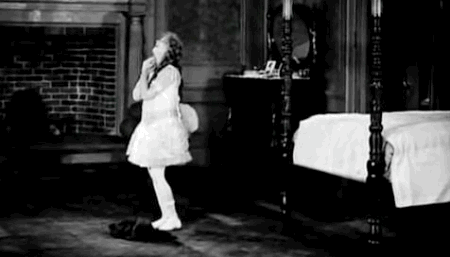
in 1928, Steamboat Willie made a cartoon which was the first cartoon with sound printed on the film, and is the first noble success for Walt Disney Studios.
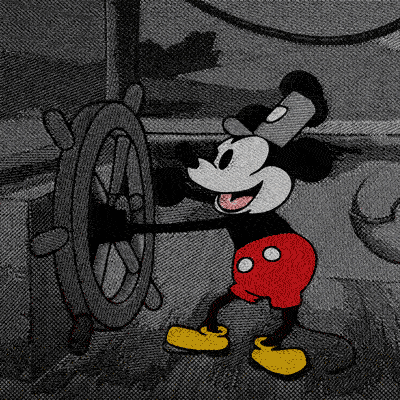
The Golden Age of American Animation, 1930-1950s:
During what many consider to be the “Golden Age” of animation, theoretical cartoons became integral part of popular culture. These years are defined by the rise of Walt Disney, Warner Brothers, MGM and Fleischer.
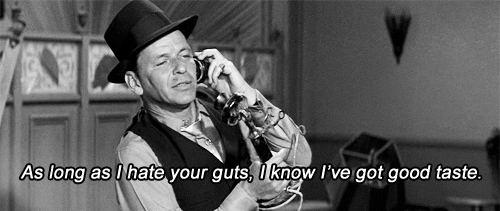
In 1930, Warner Brother Cartoons was funded and created the Merrie Melodies series.

In 1937, Walt Disney releases Snow White and the Seven Dwarfs, the first animated feature to use hand-drawn animation.

The American Television Era, 1960-1980s:
The animation industry began to adapt to the fact that television continued its rise as the entertainment medium of choice for American families. Studios created many cartoons for TV, using a “limited animation” style. By the mid 80s, with help from cable channels such as The Disney Channel and Nickolodeon.
In 1960, Hanna Berbera releases The Flintstones, the first animated series on prime time television.
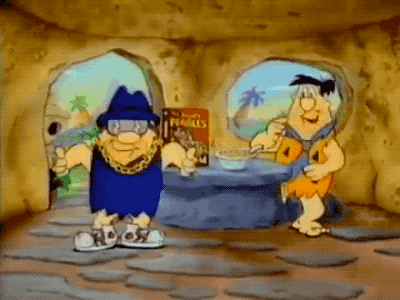
In 1961, The Yogi bear Show, a spin off of huckleberry hound debuts on national TV.

In 1963, DePatie-Freleng Enterprises wins the Academy Award for Best Short Film for The PinkPhink and continues to create shorts for theoretical release.
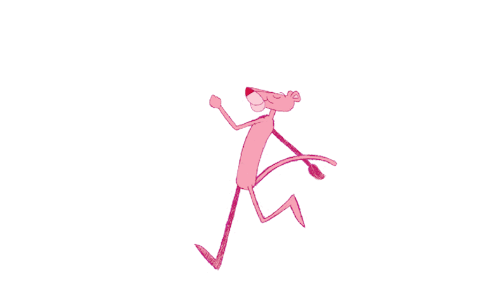
In 1964, Flitz the Cat is release- the fist animated adult feature film
Modern American Era, 1980-2014
The CGI (computer generated imagery) revolutionized animation. A principal difference of CGI animation compared to traditional animation is that drawing is replaced by 3D modeling, almost like a virtual version of stop-motion. A form of animation that combines the two and uses 2D computer drawing can be considered computer aided animation.
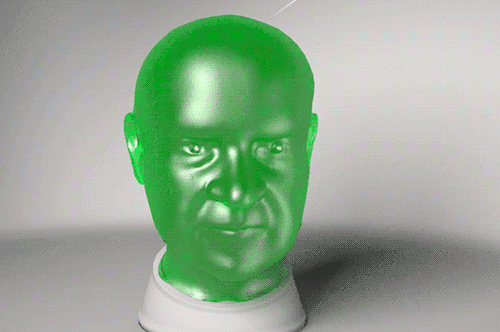
In 1984, The Adventues of Andre and Wally B was the first fully CGI animated film, created by The Graphics Group, the precursor to Pixar.
In 1987 The Simpsons was Made, The Simpsons is an American adult animated sitcom created by Matt Groening for the Fox Broadcasting Company. It is the longest-running American sitcom, the longest-running American animated program, and in 2009 it surpassed Gunsmoke as the longest-running American scripted primetime television series.
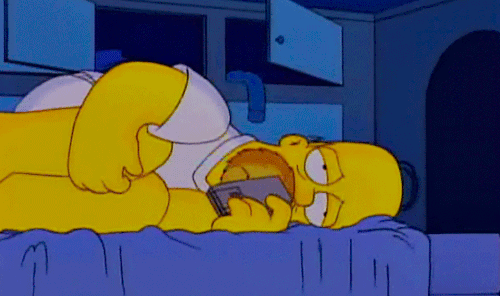
In 1995, Toy Story was the first fully computer animated feature film, was released.
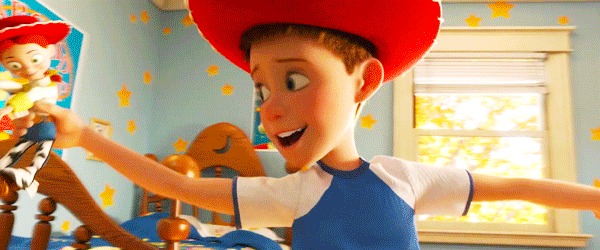
In 2014, Big Hero 6 is the fist Disney animated film to feature Marvel Comic characters.

2 notes
·
View notes
Text
The History of Animation
Before we get into the history of Animation, we would need to know what animation is. According to ‘Computer Hope’, an animation is a series of photos or images which create the illusion of movement, these photos are to be presented in rapid succession.
The Mediums of Animation:
During the industrial revolution in the West, in the 18th and 19th centuries came into experimentation mechanisms which would make images appear to move.
In 1603, the ‘Magic Lantern’ was created. It was a projector which used sheets of glass. Some sheets of glass had moving parts so it is considered to be the first example of projected animation.
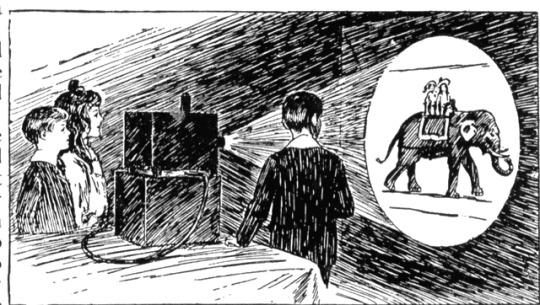
A couple hundred years later the ‘Thaumatrope’ was invented in 1824. This was a device which house a rotating mechanism with a different picture on each side. When the device was rotated the user would see the combined image (Also known as persistence of vision).
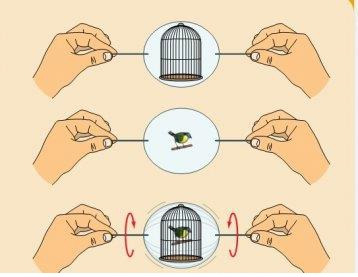
7 years after the ‘Thaumatrope’, the ‘Phenakitoscope’ was invented in 1831. This was a device which used spinning disks reflected in mirrors that made it seem like a picture was moving. A similar devices was created in 1834 which has the same concept as the ‘Phenakitoscope’ called the ‘Zoetrope’, where a hollow drum housed with images on long interchangeable strip spins and made images appear to move. In 1877, the ‘Movieola’ or the ‘Praxinoscope’, expanded on the idea of the zoetrope, using multiple wheels to rotate images, people considered that this device showed the first prototypes of animated cartoon.
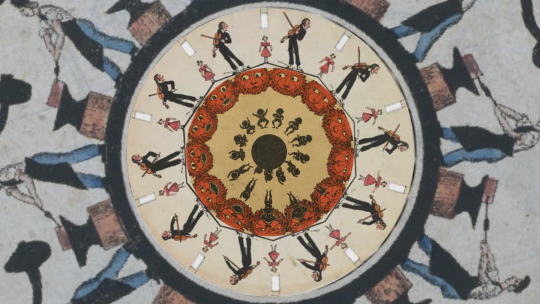
In 1864, the ‘Flip-Book’, also known as the ‘Kineograph’ was invented, the user would flick through the book so that the images in the book were seen in rapid succession. This medium of animation would reach a greater audience and has inspired early animators.

1900′s - 1930′s: The Silent Era
In the early 20th century, theatrical showings of cartoons started to appear. The years between 1900 - 1930 were considered to be The Silent Era. Animation studios were being formed, the most successful being Bray Studios, which helped cartoonists launch their careers.
‘The Enchanted Drawing’, by J. Stuart Blackton, is too be considered the very first instance of animated video. The film consisted of Blackton drawing a face which reacts to Blackton’s actions.
youtube
In 1906, Blackton then created ‘Humorous Phases of Funny Faces’ which is a film which was entirely animated.
youtube
In 1908, a French cartoonist and animator Émile Cohl created one of the earliest examples of hand-drawn animation, many historians consider this film to be the very first cartoon. Instead of drawing on blackboard Cohl used paper, the blackboard effect was created using negative film.
youtube
In 1914 Winsor MCay created the very first animation which featured a character with an appealing personality this is what set him apart from the earlier animators like Blackton and Cohl. Gertie the Dinosaur was also the first animation to use keyframe animation.
youtube
1919 was the year in which cartoonist Otto Messmer created Felix the Cat. This character was featured in two animated films, ‘Musical Mews’ and ‘Feline Follies’.
1928 was the year when Walt Disney Studios gained notable success with Steamboat Willie. This animation contained the now famous Mickey Mouse. This animation was also the first cartoon to have sound printed on the film.
youtube
1930′s - 1950′s: The Golden Age of Animation
At this point of time, animations have became an important part of pop culture. During this era, we see the rise of Walt Disney, The Warner Brothers, Metro-Goldwyn-Mayer and Fleischer.
The Warner Brothers:
The Warner Brothers were a group of 4 brothers, Albert, Sam, Harry and Jack. They started off as travelling exhibitors showing motion pictures across the Ohio and Pennsylvania with their portable projector. By 1907 they operated in a converted store, bothers Albert and Harry were selling tickets, whilst Sam operated the hand crank and Jack sang during the intermissions.
In 1931 the Warner Bros. produced the animated cartoon series ‘Merrie Melodies’ featuring characters from the sister series ‘The Looney Tunes’ who have been ingrained into pop culture.
Walt Disney:
Founded in 1923 in Los Angeles, California the Disney brothers produced a series called the ‘Alice Comedies’ which were live action.
In 1937, Disney created their first full length animated feature, ‘Snow White and the Seven Dwarfs’
1960′s - 1980′s: The Television Era
The Television became the new medium of consuming entertainment, the animation industry started to adapt to this new medium. Studios created these animations using a ‘limited animation’ style. Cable channels like Nickolodeon helped cartoons be everywhere on television.
1980′s - Present: The Modern Era
The next step on the journey of animation is through ‘Computer Generated Imagery’ or CGI for short. 3 dimensional models replaced the drawing from the animation, CGI is essentially virtual stop motion.
In 1984, The Graphics Group (currently known as Pixar) created the first fully CGI animated short film ‘The Adventures of Andre and Wally B’. 11 years after Pixar released Toy Story, the first fully CGI feature film.
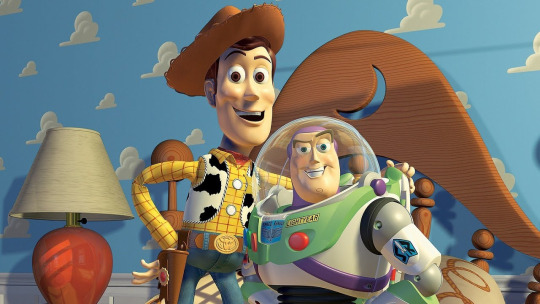
5 notes
·
View notes
Text
The Evolution Of VFX In Movies
Starting with the 60s, VFX or visual effects started to make their way into films, a famous example is the skeleton battle in “Jason And The Argonauts,” Ray Harryhausen did this all in stop motion and managed to edit them to interact with the real actor, although this hasn’t aged particularly well this was groundbreaking in the VFX industry for its time.
The 70s were a rather good time for VFX when advancements started to be made because in the early 70s VFX was hit with the industry’s recession but with star wars VFX made a staggering return. The amount of effects in this film was outstanding and this film even spawned a special effects house, Industrial Light And Magic. The film “The Exorcist” incorporated effects such as Matte Paintings and the infamous 360 degrees head turn, with the evolution in gruesome and big scale effects the 70s were a rather good time for VFX.
The 80s had great advancements in VFX especially with advancements in stop motion animation and the 80s introduced the first ever CGI scene in a film which was groundbreaking at the time and the 80s also had the first ever 3D animated short film with the title “The Adventures Of Andre and Wally B,” The 80s also introduced with using many small models to act as large models of objects which was a pretty large advancement in the VFX industry.
The 90s were just continuing on from the 80s and continued to improve with CG technology and they made advances in movies such as “Jurassic Park” which created large scale scenes with a lot of CG which was groundbreaking and still holds up well today. The 90s also introduced and utilized the first motion capture technology in the film “Total Recall” in a short X-Ray sequence. Easily the biggest advancement in VFX in the 90s was the first full length feature film created entirely in CG; this being “Toy Story.” This spawned the success of Pixar and let many other movies be more adventurous with the CG that they would use. For example “The Matrix” was extremely innovative with the VFX and CG it used, for example the bullet dodging scene which utilized many different effects and CG to achieve and it payed off because it is now one of the most recognizable scenes in media.
The 2000s just continued to increase in the clarity and quality of VFX and CG, a famous example is “The Lord Of The Rings,” this made a huge advancement in motion capture technology, this film managed to use motion capture technology to put an actor’s face and features onto a fully CG creature and this was a huge advancement in VFX. This influenced more movies to perfect this technique, other films used facial motion capture to help enhance the actor’s performance even further and to help capture realistic character movements.
In present day we are just making more advances in VFX and CG technology and creating even more ways to create realistic movements with facial and body capture technology.
https://www.pluralsight.com/blog/film-games/evolution-vfx-movies-60s-till-now
4 notes
·
View notes
Video
vimeo
The Adventures of Andre and Wally B (1984) from Kiba on Vimeo.
Pixar Short Films Collection - Volume 1 01 - The Adventures of Andre and Wally B (1984)
1 note
·
View note
Photo
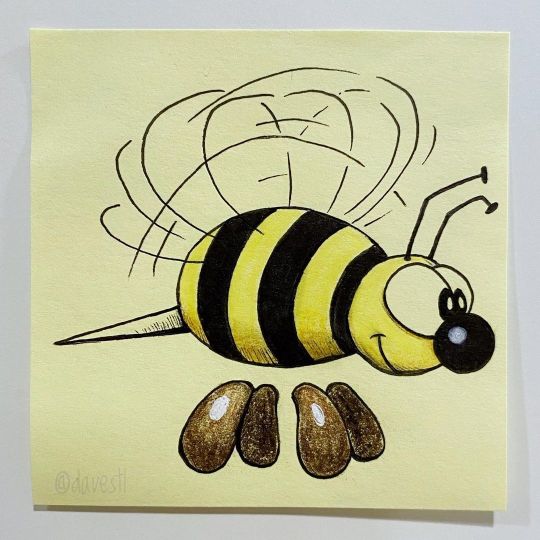
Doing a week of animated bee characters. Starting with Wally B. from Pixar’s The Adventures of Andre & Wally B. for Monday's (5/24) lunchbox drawing. #lunchboxdrawings #lunchbreakdrawings #lunchnotes #postitnotes #postit #cartoon #cartooncharacters #illustration #illustrationoftheday #artoftheday #drawingoftheday #dailydrawing #drawings #draw #drawingart #dailysketch #sketch #inking #inkillustration #colorpencil #bee #beecharacters #pixar #pixarmovie #pixarcharacter #theadventuresofandreandwallyb https://www.instagram.com/p/CPQUiAbj9tJ/?utm_medium=tumblr
#lunchboxdrawings#lunchbreakdrawings#lunchnotes#postitnotes#postit#cartoon#cartooncharacters#illustration#illustrationoftheday#artoftheday#drawingoftheday#dailydrawing#drawings#draw#drawingart#dailysketch#sketch#inking#inkillustration#colorpencil#bee#beecharacters#pixar#pixarmovie#pixarcharacter#theadventuresofandreandwallyb
1 note
·
View note